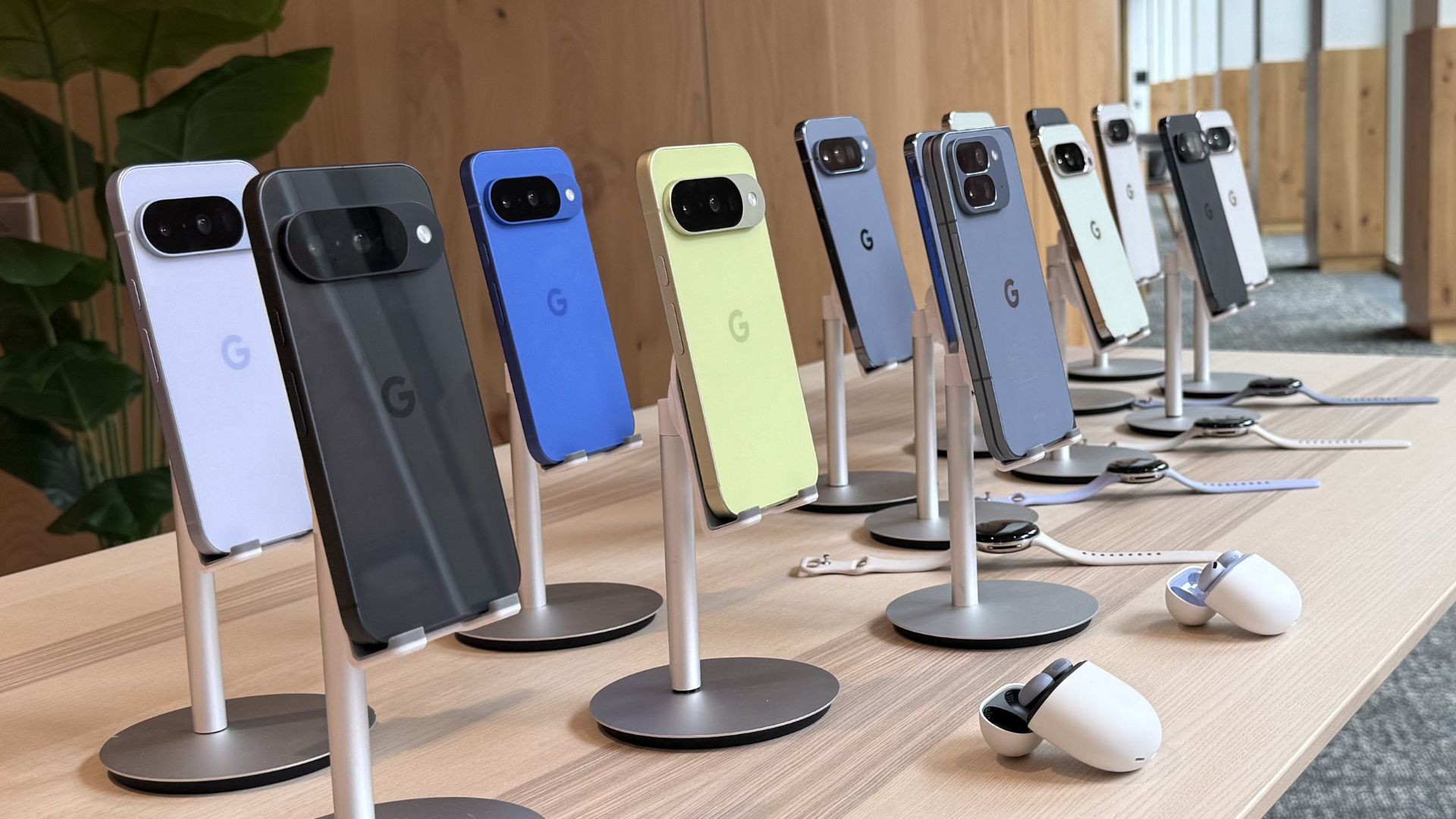Apple Watch Series 11 vs. Google Pixel Watch 4: A smartwatch ecosystem battle
watchOS or Wear OS? The Apple Watch Series 11 and Google Pixel Watch force you to decide.
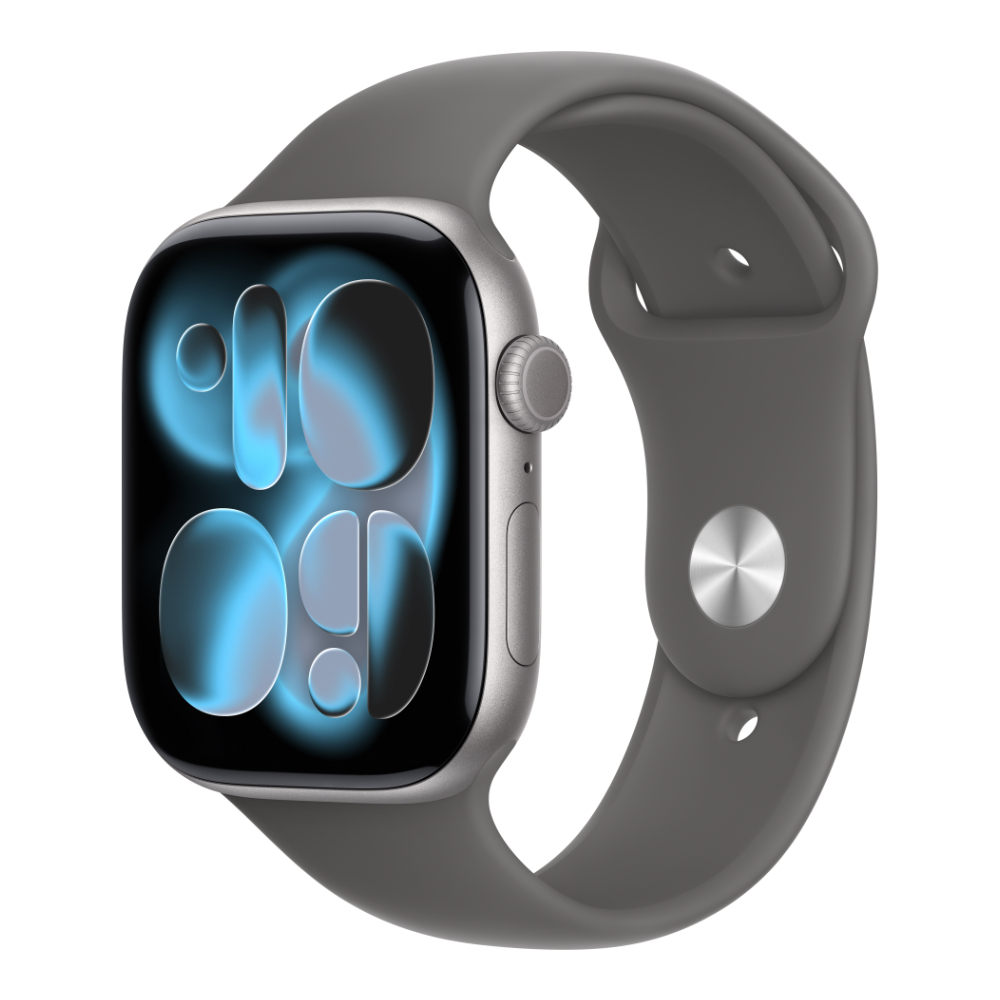
Supercharged for Apple users
The Apple Watch Series 11 is a major upgrade that adds longer battery life and more durability. It also packs serious health features, with blood pressure monitoring joining existing support for heart rate, ECG, and blood-oxygen monitoring. However, Apple's closed ecosystem makes using one without an iPhone difficult or impossible.
Pros
- 24-hour battery life
- Stronger cover glass with extra scratch-resistance
- 5G cellular option
- Blood pressure monitoring
- watchOS 26 is nearly perfected
Cons
- Daily charging still required
- Core features available on older models
- (Mostly) requires an iPhone for use
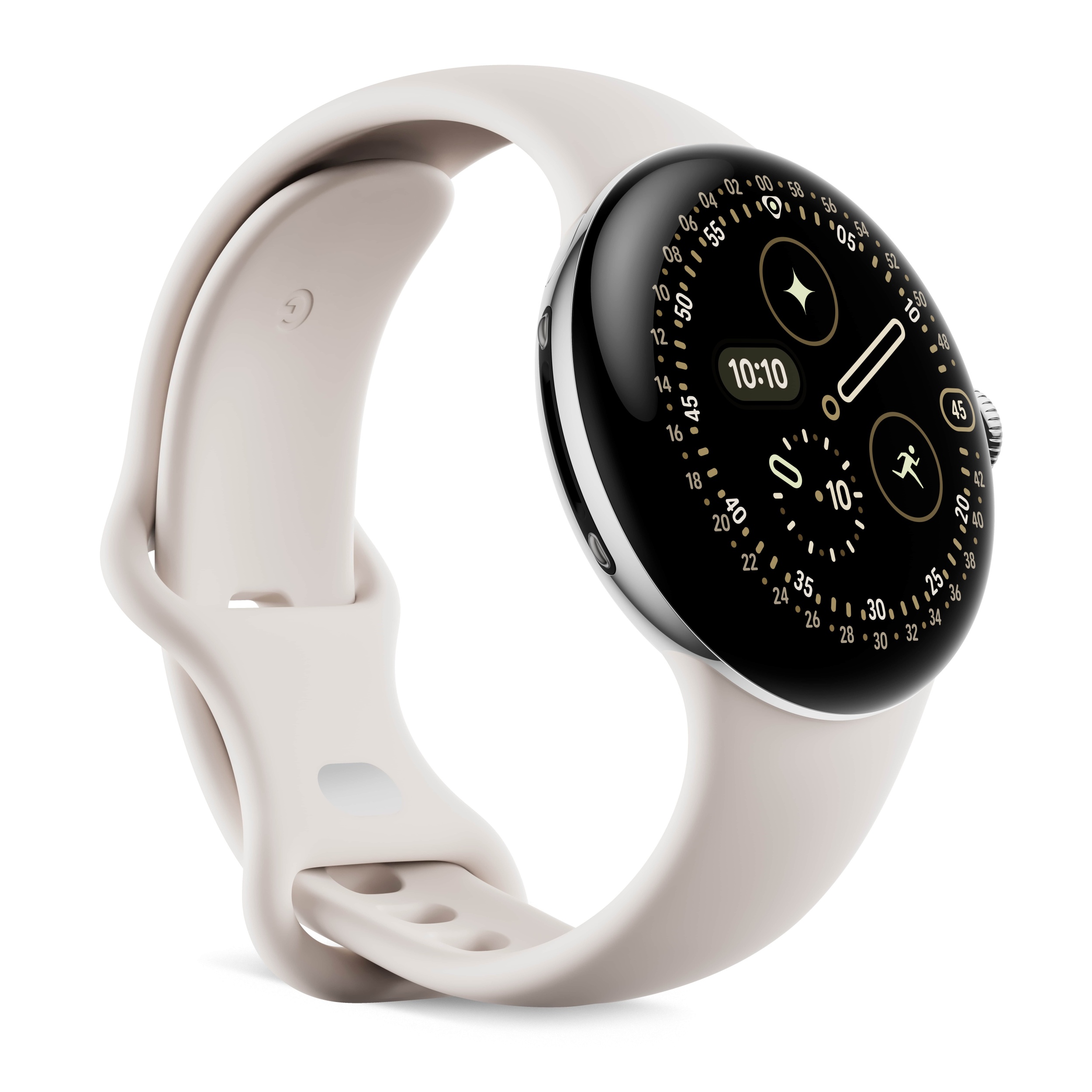
The peak Google experience
The Google Pixel Watch 4 is similarly positioned toward Android users, and more specifically, Pixel owners. It has excellent integration with Fitbit and Gemini, providing health insights and answering questions with AI. However, the Pixel Watch 4 is on the thicker side.
Pros
- Domed Actua 360 display curves to match the glass
- Runs Wear OS 6 with Gemini and Fitbit
- Powered by Snapdragon W5 Gen 2
- Solid assortment of health sensors
Cons
- Only 4G LTE
- Thicker chassis; domed glass may be less durable
- No blood pressure monitoring
- Fewer case and band styles
Apple and Google are always natural competitors, and they just so happen to have two of the best smartwatches hitting the market: the Apple Watch Series 11 and the Google Pixel Watch 4. Since you can't easily use an Apple Watch with an Android phone or vice versa, the decision largely rests upon which ecosystem you've already invested in.
However, if you're wondering how the Series 11 stacks up against the Pixel Watch 4, we have you covered. After all, there is a way to use an Apple Watch without daily driving an iPhone, so Android users can use the Series 11 as their smartwatch if they really want to. Let's break down all the differences between the latest Apple Watch Series 11 and the Google Pixel Watch 4.
Apple Watch Series 11 vs. Google Pixel Watch 4: Design and display
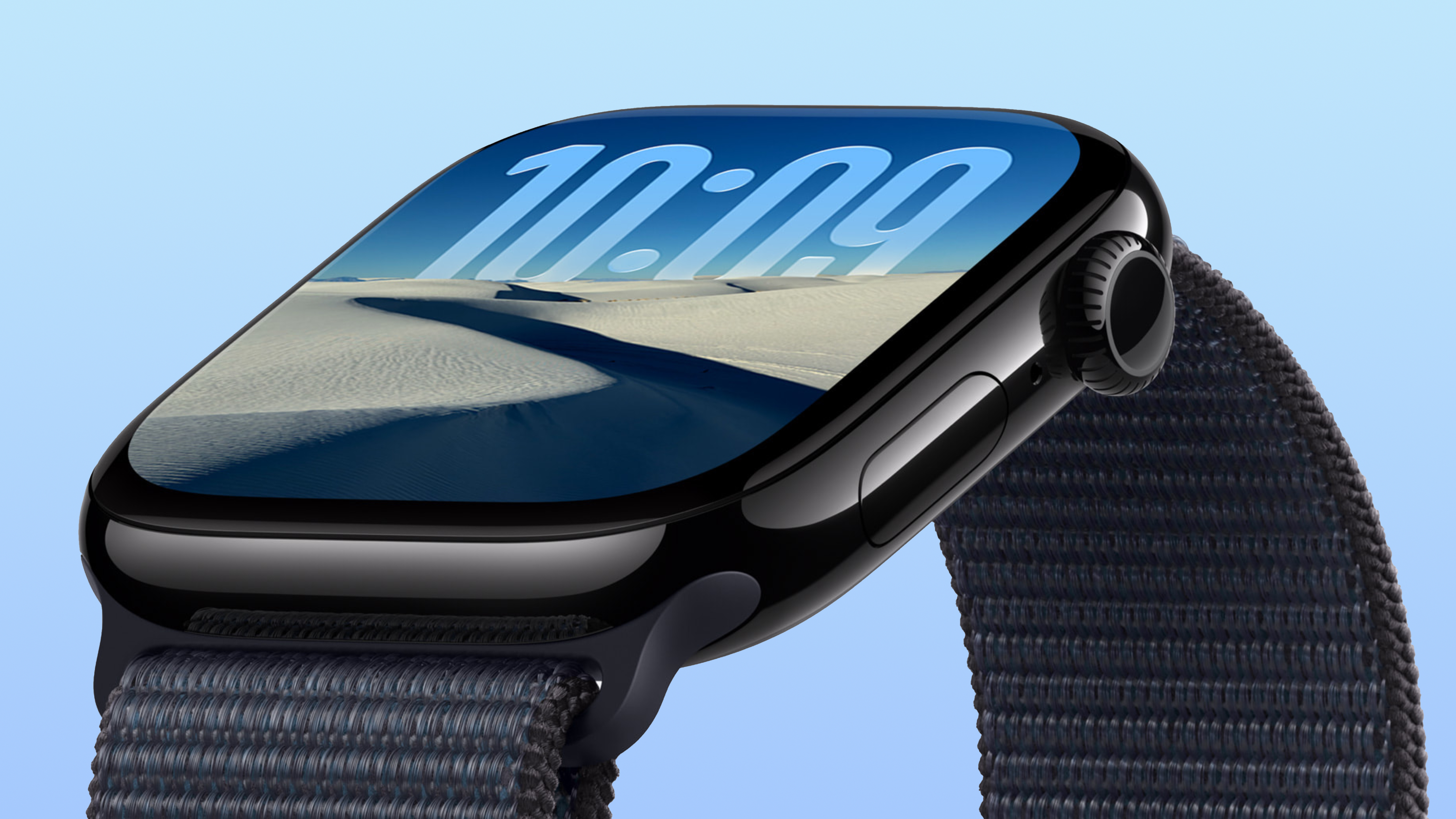
Neither Apple nor Google deviated significantly from their typical smartwatch design language when creating the Series 11 or Pixel Watch 4. They resemble their predecessors closely, but are distinct from one another. Apple Watches tend to sport a mostly square design with a cover glass and chassis that are slightly curved. Meanwhile, Pixel Watch models feature a "waterdrop" design with a circular shape and curved glass that seamlessly integrates into the chassis.
Overall, the Pixel Watch 4 looks more minimalist and dainty than the Series 11. The Apple Watch Series 11 is available in either 42mm or 46mm case sizes, whereas the Pixel Watch 4 is offered in 41mm or 45mm case sizes. Although the Pixel Watch is more compact on the wrist, it's much thicker, measuring 12.3mm compared to the Apple Watch's 9.7mm thickness.
The weight between the two watches is nearly identical, with about a gram separating the non-LTE versions of Series 11 and Pixel Watch 4.
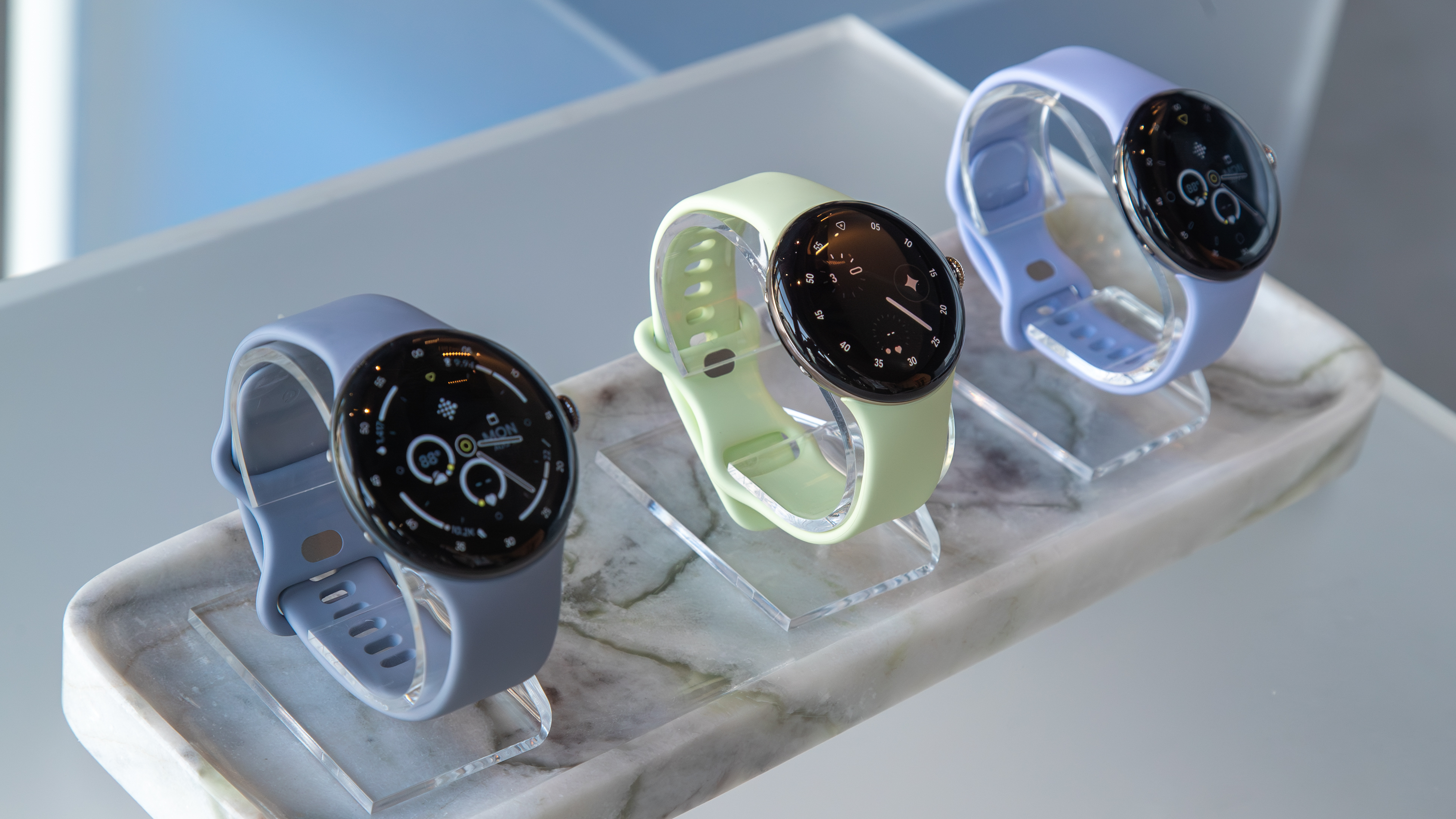
The Apple Watch Series 11 is decidedly more premium, with both aluminum and titanium case options available. Google only sells the Pixel Watch 4 in either matte or polished aluminum. There are also more colors and band configurations on the Apple Watch side, and the Series 11 has the advantage of being backwards-compatible with all prior bands within their size bloc (38mm, 40mm, 41mm, 42mm bands are interchangeable; 42mm, 44mm, 45mm, 46mm, 49mm bands are interchangeable).
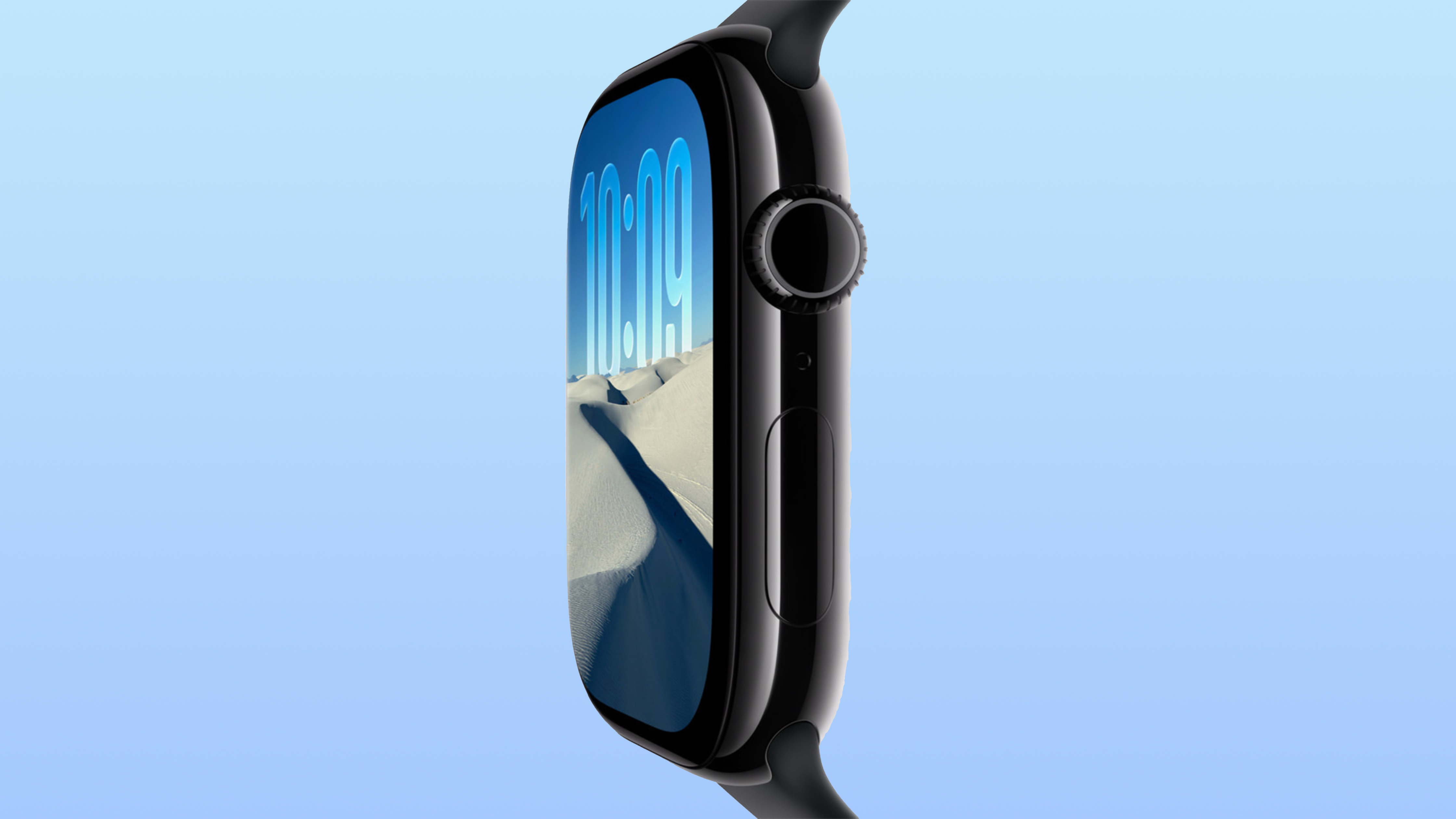
The Pixel Watch 4's display is now domed to match the cover glass and is brighter than the Series 11 with a peak brightness rating of 3,000 nits. By comparison, the Apple Watch Series 11 has the advantage of supporting wide-angle OLED technology, which should make it easier to view off-angle than the Pixel Watch 4. The Series 11 display is also slightly higher in resolution, with a pixel density of 326ppi compared to 320ppi on the Pixel Watch 4.
Get the latest news from Android Central, your trusted companion in the world of Android
In terms of durability, the titanium Series 11 uses a sapphire crystal covering, and the aluminum Series 11 uses Ion-X glass. Ion-X is more crack-resistant, while sapphire crystal is more scratch-resistant. Google has Custom Corning Gorilla Glass 5 on the Pixel Watch 4 for scratch and crack protection. Additionally, both watches are swimproof and rated for 5ATM.
Apple Watch Series 11 vs. Google Pixel Watch 4: Hardware and specs
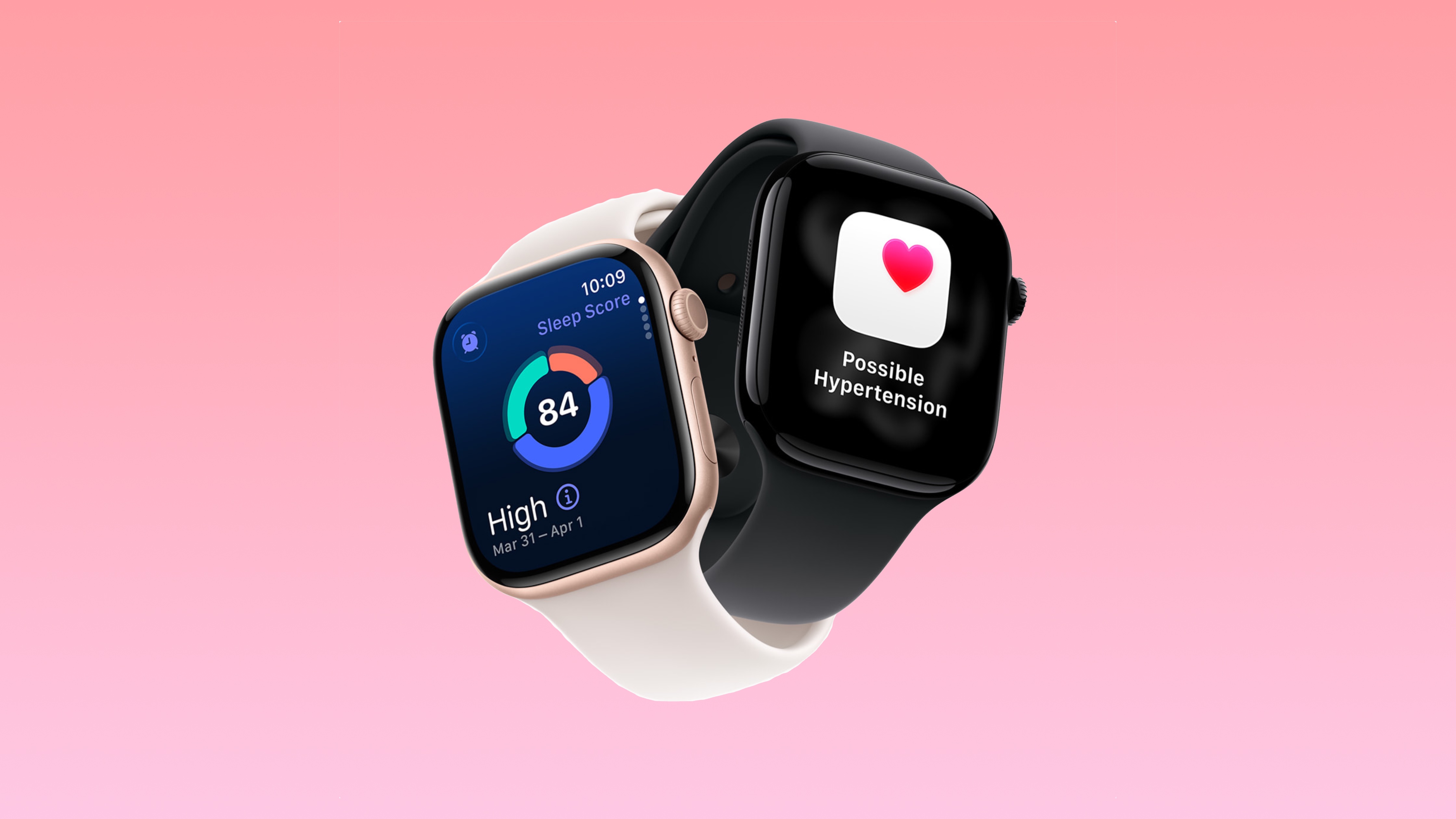
From a hardware perspective, both smartwatches will be plenty fast. The Apple Watch Series 11 is powered by the S10 chip, a system-in-package processor that includes a dual-core processor and a quad-core Neural Engine. Meanwhile, the Pixel Watch 4 includes a Qualcomm Snapdragon W5 Gen 2 chip with a Cortex-M55 co-processor.
Google's leveraging of the co-processor for certain tasks helped it improve battery life for the Pixel Watch 4. The smaller version of the Pixel Watch 4 now lasts up to 30 hours, while the larger model can run for up to 40 hours. That's longer, at least on paper, than the Series 11, which is rated for 24 hours of battery life. It's worth noting that in the past, you could get more battery life out of Apple Watches and Pixel Watches than officially claimed.
Specs | Apple Watch Series 11 | Google Pixel Watch 4 |
|---|---|---|
OS | watchOS 26 | Wear OS 6 |
CPU | S10 chip with 64‑bit dual-core processor; quad-core Neural Engine | Snapdragon W5 Gen 2, Cortex M55 co-processor |
Display | Wide-angle OLED, LTPO3 display, 416 by 496 pixels, 1220 sq mm display area, 326ppi, up to 2,000 nits peak brightness | Actua 360 AMOLED LTPO display, 320ppi 3,000 nits, 1-60Hz refresh rate |
RAM / Storage | 1GB (unconfirmed) + 64GB | 2GB + 32GB |
Connectivity | L1 GPS, GLONASS, Galileo, QZSS, and BeiDou, RedCap for 5G and LTE, Wi-Fi 4 (802.11n), 2.4GHz and 5GHz Wi-Fi networks, Bluetooth 5.3, Second-generation Ultra Wideband chip, NFC | Bluetooth 6, Wi-Fi 2.4/5GHz, NFC, UWB, LTE (optional), dual-frequency GPS, Galileo, Glonass, (ROW) Beidou, QZSS, Navic, Satellite SOS, |
Sensors | Electrical heart sensor, third‑generation optical heart sensor, Blood oxygen sensor, Temperature sensor, Compass, Always‑on altimeter, High‑g accelerometer, High dynamic range gyroscope, Ambient light sensor, Depth gauge to 6 meters, Water temperature sensor | Compass, altimeter, barometer, magnetometer, 3-axis accelerometer, gyroscope, ambient light, multi-path optical heart rate sensor, cEDA, SpO2, ECG, far field skin temperature sensor |
Battery | Up to 24 hours, up to 38 hours in Low Power Mode | 41mm: 325mAh, 30 hours with AOD, 48 hours with Battery Saver 45mm: 455mAh, 40 hours with AOD, 72 hours with Battery Saver |
Charging | Up to 80% charge in about 30 minutes | 41mm: 15 minutes to 50%, 25 minutes to 80%, 45 minutes to 100% 45mm: 15 minutes to 50%, 30 minutes to 80%, 60 minutes to 100% |
Materials | Aluminum or titanium | Recycled aluminum |
Protection | Ion‑X front glass with 2x scratch resistance (aluminum cases) OR sapphire front crystal (titanium cases) 5ATM, IP6X | Custom Corning Gorilla Glass 5, 5ATM, IP68 |
Band | Multiple band options | Active (fluoroelastomer) |
Dimensions | 42mm x 39mm x 9.7mm / 46mm x 39mm x 9.7mm | 41 x 41 x 12.3mm / 45 x 45 x 12.3mm |
Weight (w/out band) | 42mm: 30.3 grams 46mm: 37.8 grams | 41mm: 31g 45mm: 36.7g |
Colors | Aluminum: Rose Gold, Silver, Space Gray, Jet Black Titanium: Gold, Natural, Slate | Matte Black, Polished Silver, Champagne Gold (41mm), Satin Moonstone (45mm) |
Apple hasn't confirmed the amount of memory onboard the Apple Watch Series 11, but it does provide 64GB of storage. That's extra space for apps, workouts, music, podcasts, and more. The Pixel Watch 4 has 2GB of memory but only 32GB of storage.
Additionally, the Series 11's cellular model supports 5G and LTE, becoming one of the first smartwatches to do so. You can equip the Pixel Watch 4 with cellular, but you'll only have LTE, not 5G. On the other hand, the Pixel Watch 4 features satellite connectivity, whereas Apple requires you to purchase the Ultra 3 for that capability.
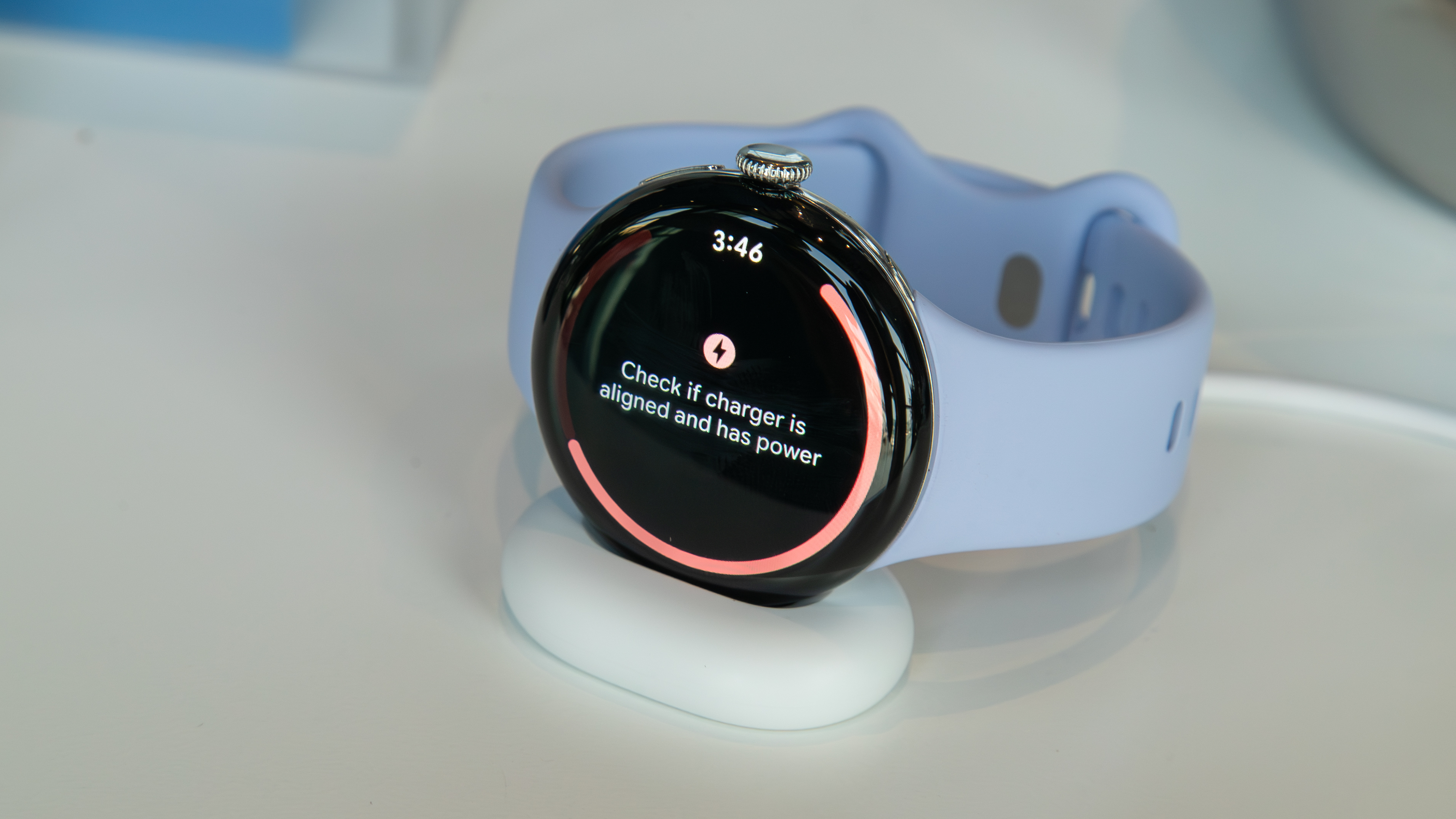
Apple hasn't changed its watch charger in a decade of making smartwatches, yet Google is on its third charger in four generations. That isn't great for compatibility. However, the smaller Pixel Watch 4 does charge slightly faster than the Series 11, reaching 80% in just 25 minutes. The larger Pixel Watch 4 and both Series 11 models need 30 minutes of charging to hit 80%.
Apple Watch Series 11 vs. Google Pixel Watch 4: Fitness and software

Apple seems to have the advantage in fitness and health features, both in hardware and software. The software experience is sound with Apple Fitness, which has excellent workout tracking and features like Training Load. Best of all, the entire experience is subscription-free — you'll only have to pay for Apple Fitness Plus if you want guided workout videos; no features are hidden behind that paywall.
Some Pixel Watch 4 features are hidden behind the Fitbit Premium subscription, which costs $10 per month. The core experience is free, though, and built upon the Fitbit ecosystem. The watch can track over 40 different types of workouts, and now has dual-band GPS, like the Series 11, for more accurate tracking.
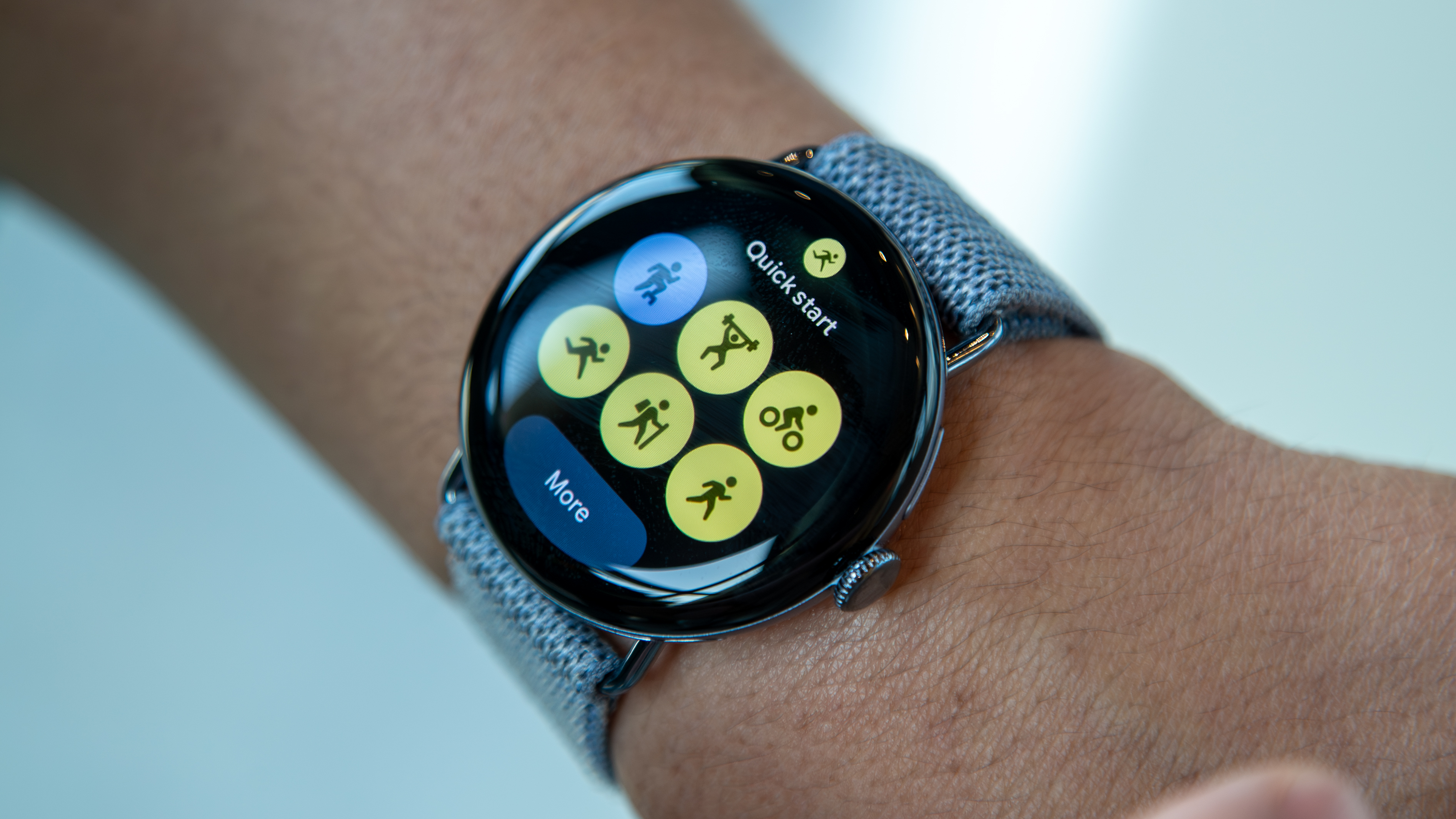
While both watches support the standard heart rate, temperature, ECG, and blood-oxygen readings, Apple takes a step forward with blood pressure monitoring on the Series 11. It's not a replacement for medical-grade monitoring, but rather a preventive tool that can identify signs of hypertension and direct individuals to medical professionals. This is a potential life-saving feature that only Apple is offering on smartwatches in the U.S.
Apple Watch Series 11 vs. Google Pixel Watch 4: Which should you buy?
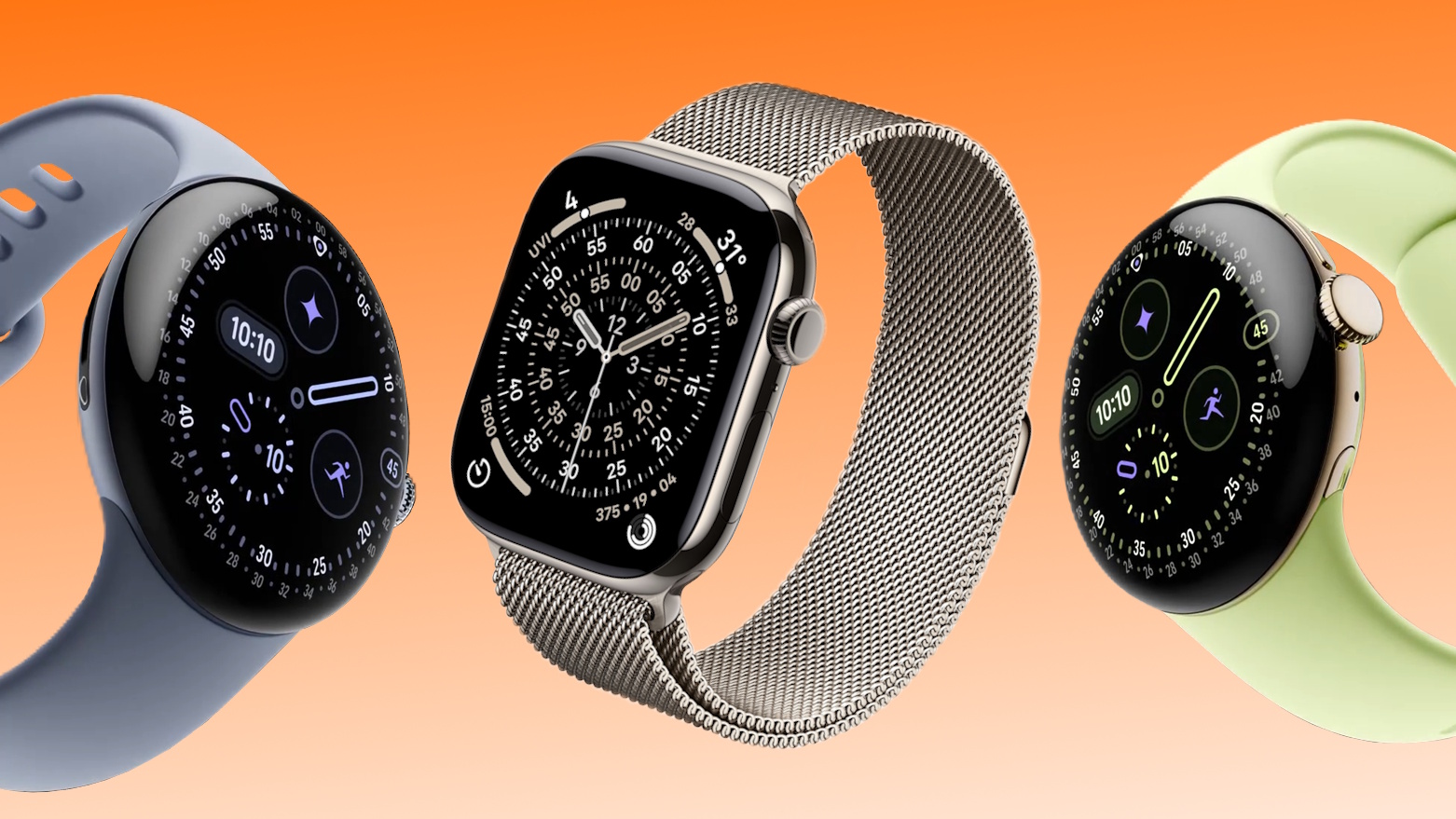
The Apple Watch Series 11 appears to be the more mature smartwatch, but that's unsurprising, because Apple has been doing wearables longer than Google. The fitness and health experience on watchOS 26 is more robust and built out than the one in Wear OS 6, which relies on Fitbit and requires a subscription for full functionality.
The two sizes of Series 11 smartwatches are also bigger than their respective Pixel Watch 4 counterparts, and the Apple Watch hardware is more premium, with titanium case options available.
However, it's worth noting that Google has a clear edge in the voice assistant category. The Pixel Watch 4 is powered by Gemini, which can handle basic Assistant tasks and general AI queries. Meanwhile, the Apple Watch Series 11 cannot use Siri at all without a connection to your phone, Wi-Fi, or cellular network. And if you're looking for a smartwatch on the Android side that's just as mature as the Apple Watch, the Samsung Galaxy Watch 8 is a great option.
Still, you can't go wrong with the Pixel Watch 4, especially if minimalism and Google integration are your two main priorities.

The mature experience
Apple has been making smartwatches longer than Google, and the refinement shows in the Apple Watch Series 11. It's powerful, and watchOS 26 is smooth. Additionally, the Apple Watch is the pinnacle of consistency — chargers and bands made for the first one will work just fine with the Series 11.

The one for Android
The Google Pixel Watch 4 is the closest thing you'll find to the Apple Watch experience with an Android phone. Google's integration with Fitbit and Pixel hardware is nothing to scoff at, and the company is so far ahead of Apple with Gemini integration.

Brady is a tech journalist for Android Central, with a focus on news, phones, tablets, audio, wearables, and software. He has spent the last three years reporting and commenting on all things related to consumer technology for various publications. Brady graduated from St. John's University with a bachelor's degree in journalism. His work has been published in XDA, Android Police, Tech Advisor, iMore, Screen Rant, and Android Headlines. When he isn't experimenting with the latest tech, you can find Brady running or watching Big East basketball.
You must confirm your public display name before commenting
Please logout and then login again, you will then be prompted to enter your display name.
